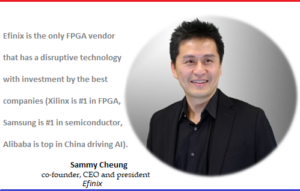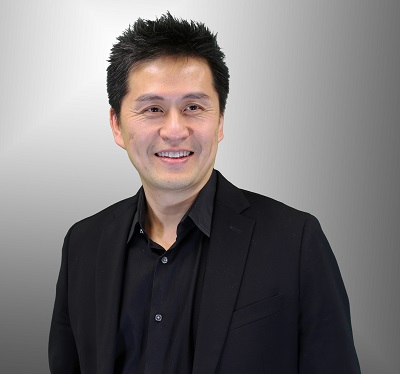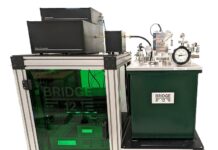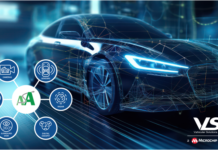
This is the age of AI and FPGA, field-programmable gate array technology, or what we call programmable chips is one of the fundamental technologies expected to drive AI development. Efinix has created a fascinating twist on the FPGA technology. Efinix Trion T20 series FPGAs have gone into volume production and also started sampling the next family of FPGAs, the T120 series. The company’s co-founder, CEO and president, Sammy Cheung answers how Efinix emerged as a strong leader rather than a start-up. He shares his insights with Electronics Media on growing usage of FPGA’s in AI applications, Quantum FPGA technology and associated challenges with FPGA.
Why FPGA’s are gaining traction for AI applications?
Sammy Cheung: Technically, there are two basics in FPGA technology that favors FPGA to be used in AI applications. First, it’s the multipliers/embedded-memory/programmable-logic combination makes it easy to build low-latency, programmable DNN. Second, customizable logic enables customers to build differentiations and features for enhancing end-product’s value and TAM.
Businesswise, FPGA is already adopted in almost all types of applications and markets. It’s a natural evolution for all the FPGA users to use FPGA to add their AI applications. The nice part about FPGA is its established ecosystem for development workflow and IPs that allow users to safely upgrade that product to AI driven.
What is driving the wonderful Market reception of Trion T20 FPGAs?
Sammy Cheung: The industry has been waiting for a long time for a true innovator to emerge and continue the mission of delivering a true FPGA roadmap that can address mainstream requirements of: (i) low power, (ii) small form factor and (iii) price it right for high volume. Trion FPGAs deliver all three and are delivered on time.
T20 addresses entry-level markets in consumer and industrial that are excited about the price and power competitiveness of Trion. We achieved over 100+ customer engagements in six months since we delivered our 1st samples of T4 in H2-2018.
Efinix delivers a complete FPGA design workflow in Efinity IDE which is easy to use. Also, our team has the expertise and experience in FPGA customer support. These two factors strongly motivate customers switching to Efinix.
Efinix’s technology is scalable to very high density and very portable to advanced silicon process. These factors present a promising roadmap for customers to commit resources and investment in Efinix’s product.
What makes Efinix emerged as a strong leader rather than a start-up.
Sammy Cheung: Efinix’ Quantum’s FPGA technology is 4x PPA better than the best! It has received endorsement and investment from giants in the industry including Xilinx, Samsung and Alibaba.
Efinix’s positioning as the AI Silicon Platform takes the original and successful programmable logic ecosystem concept to a next level for the AI era. This AI silicon platform not only provide the basic Trion FPGA device but also FPGA-AI-Core (Licensing) and AI-Accelerated ASIC. The key is the Efinity IDE which serves as the centralized software layer gluing the hardware layer (system, chip and silicon process) and application layer (Solutions/SW/AI development flow).
FPGA are used less often for training but much more often for everything else. What’s your intake on this?
Sammy Cheung: Training is mainly done in datacenter and it requires lots of floating point computation. It’s a good fit for GPU than FPGA.
However, training is much smaller market than inference which exist in both datacenter and edge. FPGA is great for inference due to programmability, low latency hardware nature. For edge, the situation is even better for FPGA especially for Efinix’s Trion FPGA because power, cost and time-2-markets are the winning ingredients demanded by the market whereas Trion delivers all of them.
What technologies or factors that fuel the growth of FPGA market?
Sammy Cheung: AI is expected to be added, inserted into all markets and applications. It will be led by markets involving computer vision and various sensing.
5G for sure will fuel a massive market growth, especially in mobile devices and IoT. AI in mobile and AIOT will then create massive opportunities with fragmented markets that require different customization and differentiation. That would be the next biggest growth for FPGA.
What are the major challenges faced by the FPGA market?
Sammy Cheung: Develop FPGA platform and business require many different expertise in hardware, software, applications etc. Hiring the right people with good understanding of FPGA technology is a challenge, that could prohibit FPGA to grow into market competing with standard processors and SoC, etc.
Tell us about Quantum FPGA technology and its advantages over traditional FPGAs
Sammy Cheung: The fundamental of Quantum architecture is that logic and routing is interchangeable so that worst case routing switch size and complex logic cone can be built by software configuration rather than fixed worst case hardware structure. This largely reduce the area of the FPGA fabric by 2X to 4X. Smaller area also equates to lower power.
Quantum FPGA fabric is built with only seven layers of metal and standard silicon process. This makes the technology silicon process and foundry agnostic. This advantage enables Quantum FPGA to be a licensable AI core that can be integrated with various SoC solutions outside standard FPGA device domain.
Why Vendors should choose Efinix for their programming device?

Sammy Cheung: Efinix is the only FPGA vendor that has a disruptive technology with investment by the best companies (Xilinx is #1 in FPGA, Samsung is #1 in semiconductor, Alibaba is top in China driving AI).
The products already in production fulfilled the promise of low power, small form factor and priced right for high volume.
Efinix provides a credible product roadmap that will fill a big void in FPGA market space with higher density FPGA (T120 production in Q3 2019) that is also low power, small form factor and cost efficient
Can FPGAs be able to outperform GPUs with respect to speed and/or power efficiency?
Sammy Cheung: At datacenter, I believe it is head to head in performance since power consumption is not really a limit at datacenter. At edge, FPGA will be better than GPU with respect to Power-Performance-Cost trade-offs.
What future do you see for quantum FPGAs?
Sammy Cheung: In near term future (1-3 years), I expect the adoption of Quantum FPGA technology will increase tremendously through Trion FPGA device and Quantum-AI-Cores Licensing.
In long term future (5-10 years), I expect Quantum FPGA technology will become one of the mainstream technologies that will be embedded inside various applications and systems either in Trion FPGA or Quantum-AI-Cores on various SoC or AP.



















